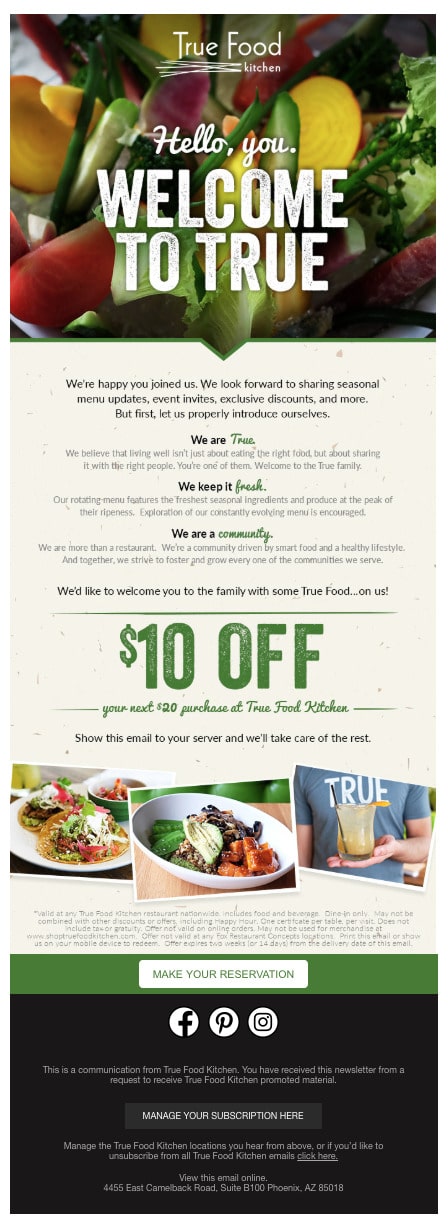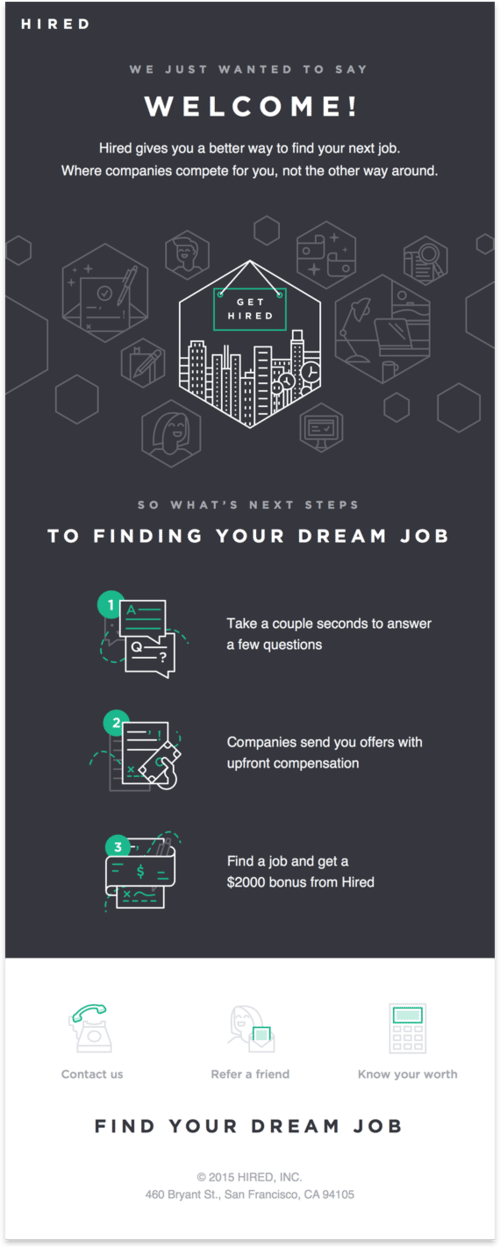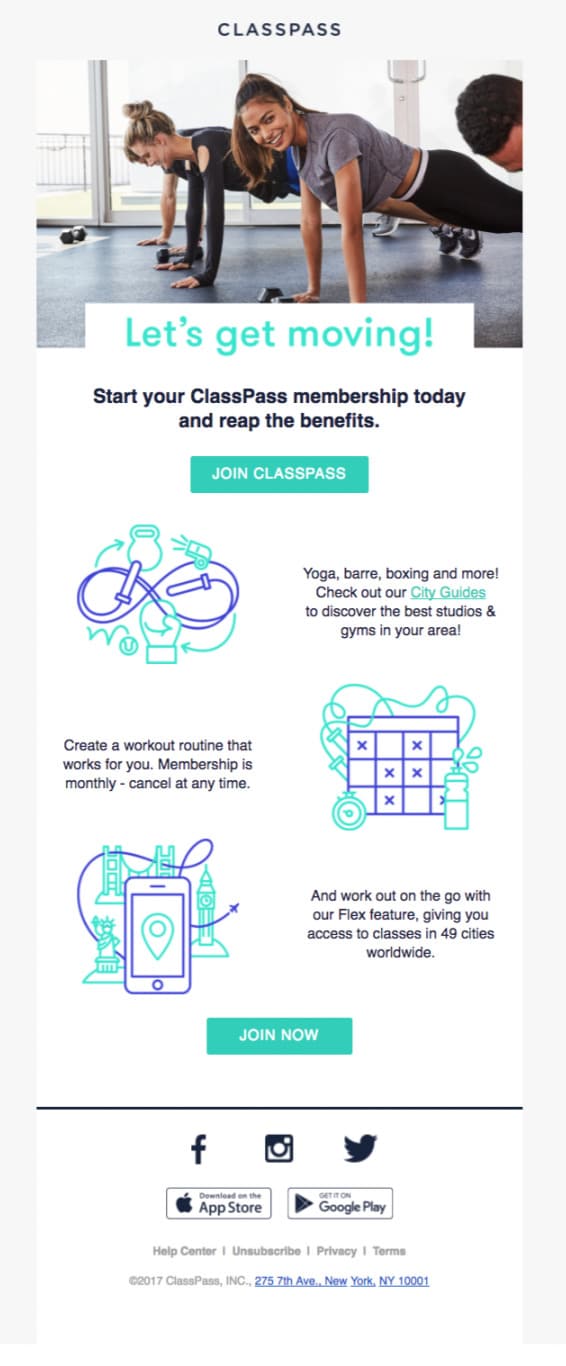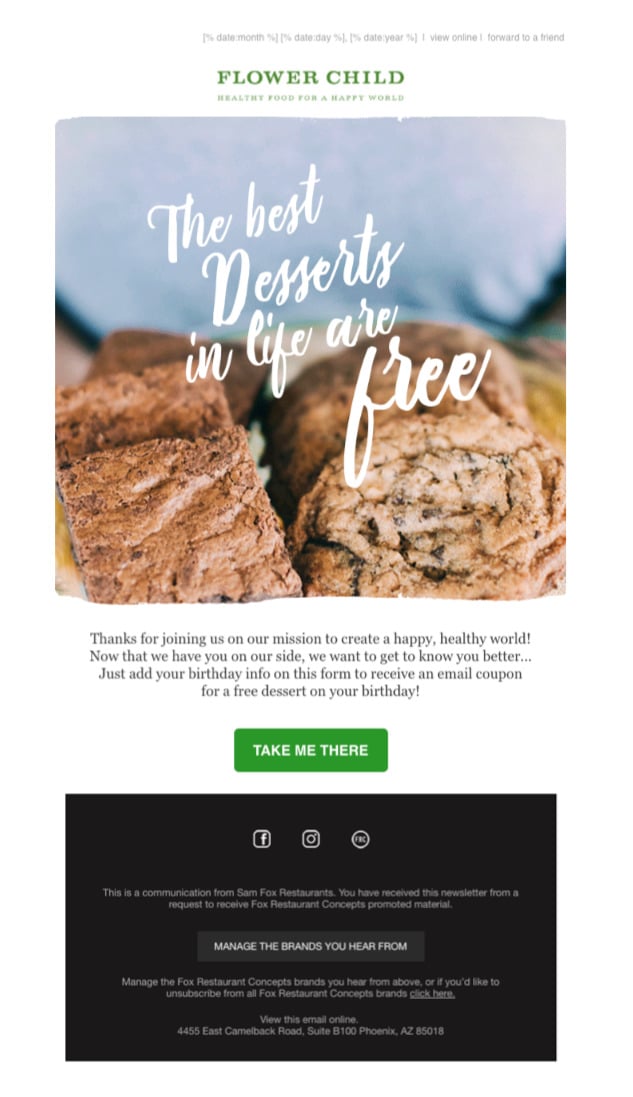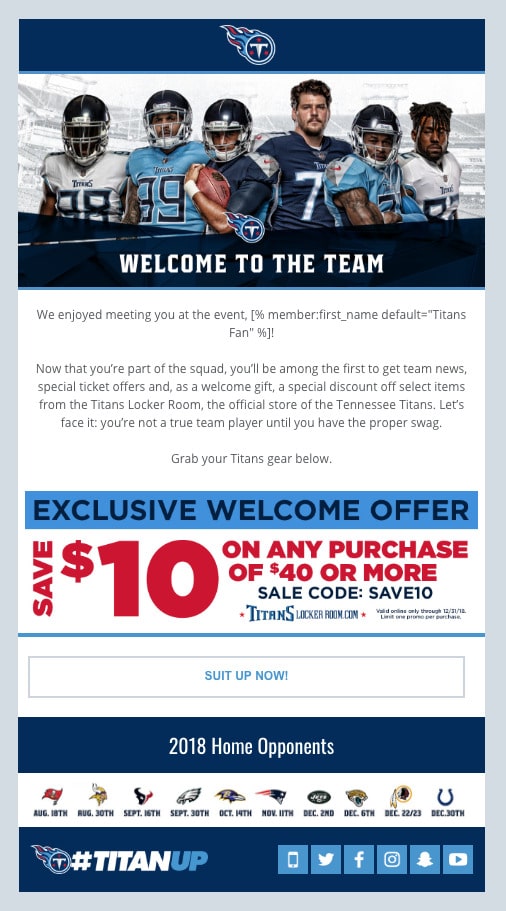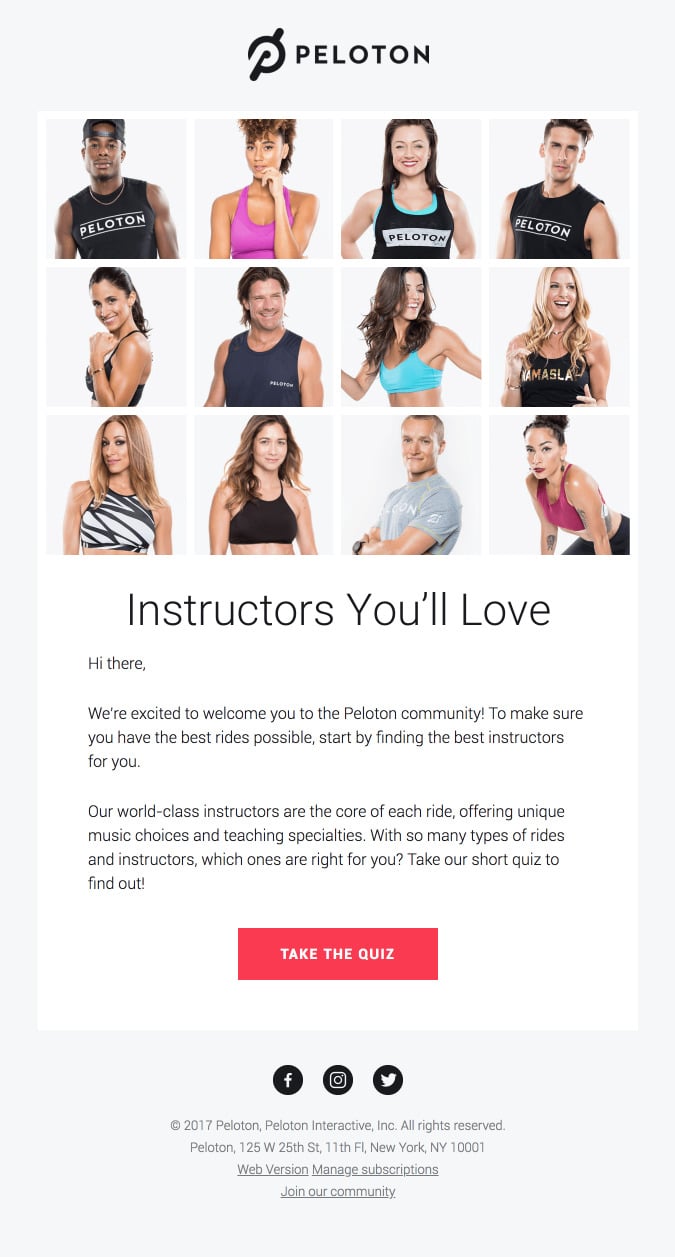7 brands that mastered the welcome email
If you've been doing this whole marketing thing for a while, you know that welcome emails are important. Your subscribers expect to receive one, it's one of the most-opened emails you'll ever send, it helps boost long-term brand loyalty... the list goes on. But one thing that continually surprises me is how few brands try to actually accomplish anything with their welcome email.
Don't get me wrong: Plenty of brands aren't automating a welcome email at all (53%, according to our 2018 Industry Report), so if you're sending one, you're already on the right track. But knowing that your welcome email will get more opens and engagement than pretty much any other email you send, isn't it better to set it up with a specific goal in mind? To illustrate what I'm talking about, here are seven brands who built their welcome emails with a specific path of action in mind.
1. Ballpark
The goal: Get new signups to log in and start using their platform.
For a brand like Ballpark—a SaaS invoicing and time tracking company—getting users logged in and using the platform is goal #1. Because they offer a free trial, the barrier to entry is incredibly low for new signups. So without a nudge, there's a good chance people will sign up, forget about their trial entirely, and let it lapse before ever exploring the platform, let alone converting.
That's why a welcome email like this is so incredibly powerful. Not only does it welcome new signups, it provides a path to log in that's as frictionless as possible, including pre-populated, personalized information. It's a simple move that can have big-time results.
Example sourced from our friends at Really Good Emails. See it here.
2. True Food Kitchen
The goal: To tell their brand story and differentiate from the competition.
If your brand has a powerful mission statement, your welcome email is the perfect place to put those values front and center. The obvious use case here would be nonprofits, but I absolutely love how True Food Kitchen adapted the concept for their own welcome email. Their values are how they differentiate from other restaurants, so it makes complete sense that they'd lead with that foot forward. And leading with values doesn't take away from the more conversion-focused messaging; it amplifies it.
3. Hired
The goal: To provide clear next steps and improve retention.
When someone signs up for your email list, they're often at the height of their engagement with your brand. They've explored your website, maybe taken a look at your social media profiles, and based on that info, decided that they like what you're putting out there enough to hear from you on a regular basis.
However, their engagement wears down quickly when you make the fatal mistake of not telling them what to do next. Your new subscribers aren't likely to seek out next steps on their own now that they've opted into your communications, so make it crystal clear exactly how they can continue to engage with your brand moving forward.
4. ClassPass
The goal: To outline user benefits and promote conversion.
Speaking of benefits... they're also a great area to focus on in your welcome email. Many brands choose to make their first touch email all about themselves (their products, their services, their features), but ultimately, your new subscribers want to know what's in it for them. This example from ClassPass smartly outlines the benefits for the subscriber and provides two opportunities to click through and sign up: One immediately up top and another after breaking down exactly what new users will get out of the relationship.
5. Flower Child
The goal: Gather valuable subscriber data to use later down the road.
It's a classic conundrum in the email world: You want as much subscriber data as possible so you can send targeted messaging, but you also don't want to include too many fields on your signup form. An easy fix? Ask for whatever relevant data you need in your welcome email. When you frame the ask as an offer, your new subscribers will be super willing to oblige. And the offer doesn't have to be a chocolate chip cookie to be compelling: For B2B brands, for instance, simply tell your subscribers the information will help you send only content that interests them.
6. The Tennessee Titans
The goal: Compel new signups to purchase through their online store.
This is a pretty typical goal for any brand with an e-commerce presence: Get people to buy stuff. But the Titans take it to the next level in a couple of clever ways:
1. Explicitly referencing where signups came from. If you collect email addresses at an in-person event, during checkout at a brick-and-mortar store, or through a special promotion like a giveaway (i.e. any way that isn't a typical signup form on your website), be sure to reference that in your welcome email. It sets the right context from the beginning and creates a relationship of trust with people who may have forgotten that they signed up in the first place.
2. Finishing the thought of WHY they should act. Many marketers lean too heavily on discounts to compel subscribers to buy. Here, it's based on emotions: You're a part of our team, so extend that relationship by sporting our gear. It's much more powerful and on-brand than a simple "Buy now" message.
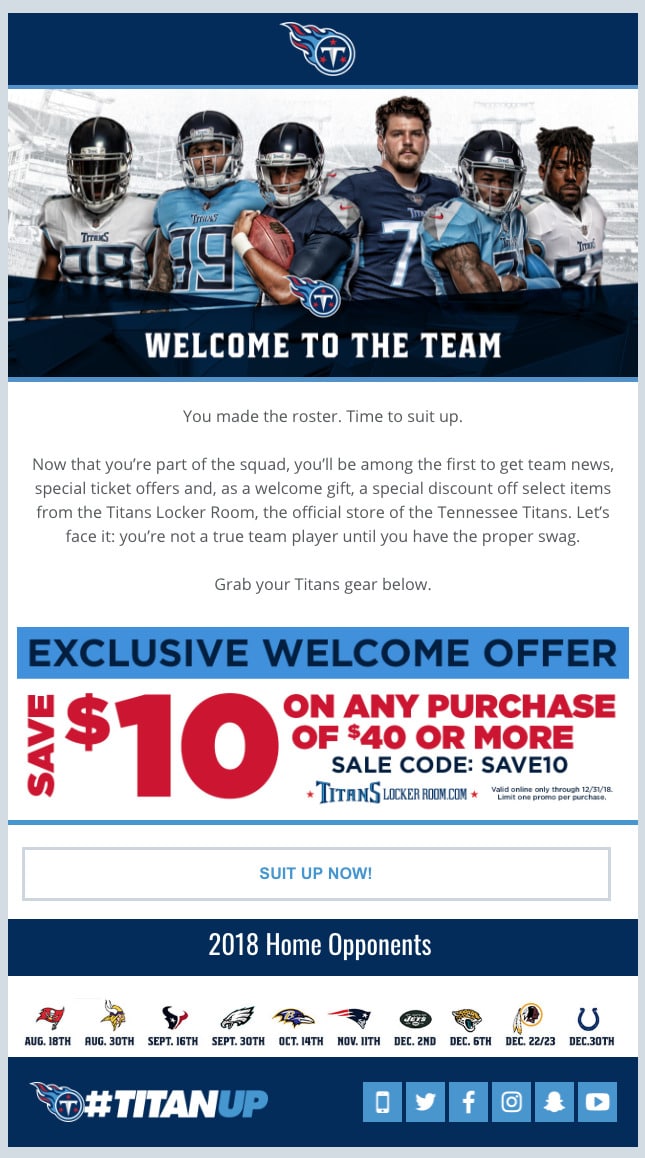
7. Peloton
The goal: Keep new subscribers engaged with compelling content.
Let's say your new subscriber has already signed up for your service or bought your product. What now? The more engaged your subscribers stay with your brand, the more likely they'll keep the relationship going. And that's where content comes in. Continually develop interesting content, like this quiz from Peloton. It adds a human element to the brand their subscribers already love, helping cement a sense of long-term loyalty.
Example sourced from our friends at Really Good Emails. See it here.
Wrap up
You know your welcome email will get attention from new subscribers, so really think about what you want to accomplish with that first touch. Whether it's simply telling your brand story or finding ways to promote customer retention, design your campaign with a clear goal in mind to make the most of your best opportunity to make a lasting first impression.
MOST RECENT ARTICLES
Want to engage your audience and grow your brand? Try Emma's robust easy-to-use product today.


